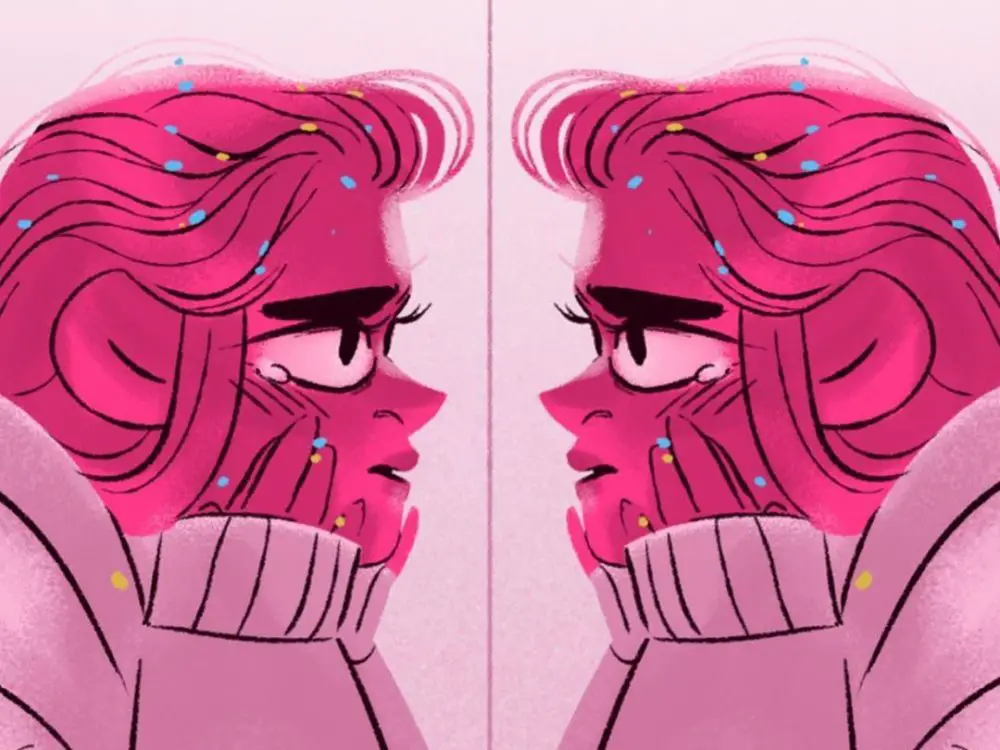As I’ve sluggishly trudged my way through quarantine, I have been desperate to find entertainment to occupy my time. So, when “Lore Olympus” was suggested for me to read, my interest was piqued. However, I was starting to fall under the nasty catch-22 of wanting distractions, but not having the patience to focus on something too labor intensive — which meant no rereading the Hunger Games like I wanted. Still, I decided to give the webcomic a chance and I am so glad I did. “Lore Olympus” is the perfect combination of storytelling and beautifully done visual stimulation to help you perfectly submerge yourself in the tale.
The story of Hades’ abduction of Persephone is one of the most famously discussed Greek myths, even today. The original fable begins with Hades spying on Persephone in the mortal realm, where she maintains spring with her mother, Demeter. Being the Goddess of Spring, she spends her days making the Earth and humans happy with an abundance of scenic flora and warm weather. Hades falls for Persephone and kidnaps her to the Underworld, where he marries her.
Demeter, also a patron to the Earth’s spring, is heartbroken and completely abandons her duties, giving way to the first winter the mortal realm has ever faced. Eventually, Demeter and Hades come to an agreement to allow them both to be with Persephone six months out of the year. Persephone now spends the rest of eternity splitting half the year in the Underworld with Hades and the other half with her mother. Through Hades and Demeter’s agreement, the Earth comes to have the cyclical transition from winter to spring. The tale is one of great importance in Greek mythology and perfectly encompasses the type of romance around which Greek myths often center.
However, Rachel Smythe’s “Lore Olympus” has a different take on the narrative. Not only are many of the story’s components modernized, but it also adds numerous fun and creative twists throughout the initially serious tale. Hades and Persephone meet in a much less harrowing, but equally dramatic, way in the webcomic and are then exposed to many conflicts, making their love-at-first-sight forbidden. Persephone is a sweet and lively university student, on her own in Olympus for the first time, as she has spent her whole life under her mother’s protection in the Mortal Realm. Hades is the feared king of the Underworld who faces seclusion and loneliness as he rules over all mortal souls.
Each has their own baggage and emotional hang-ups that make being together more complicated than it should be, and outside forces constantly fight to keep them apart, including Persephone’s over-protective mother, Hades’ self-esteem issues and toxic relationship with another woman, Persephone’s prior commitment to the Goddesses of Eternal Maidenhood (TGOEM) and other gods vying for Persephone’s attention.
Smythe does not just seamlessly incorporate modern technology, high society shenanigans and the thrill of forbidden romance into the myth, but also an abundance of dark themes. The webcomic deals with triggering topics that the original story either ignores or downplays. Physical, mental and sexual abuse are viewed through the perspective of the victim and the perpetrator. “Lore Olympus” brings light to sinister issues and addresses the highs and lows of overcoming both their effects as well as one’s abuser.
Smythe also has an overwhelming number of strong female characters throughout the comic. Not only is Persephone a relatable and admirable lead with distinctive layers, but she is constantly surrounded by other complex women who bring so much strength and emotion to the story. Hera is the sophisticated and resilient queen of Olympus, Artemis is the kick-ass Goddess of Hunt and Chastity who takes no B.S. and Aphrodite is the self-centered, yet loving Goddess of Beauty and Love. All the goddesses, and many other female characters, are brilliantly and realistically portrayed as flawed, with distinct personalities. Even the more unlikeable female characters are given the same level of depth and nuance.
“Lore Olympus” also balances the inclusion of humor and healthy platonic friendships. Characters like Hermes, Poseidon, Eros, Hecate and even Hades, bring an unexpected amount of comedy to the webcomic and develop strong relationships throughout the tale. Their presence creates entertaining and heartfelt moments, of which numerous make the seamless transition between being light-hearted and heartbreaking all throughout the comic. Though the story is centered overwhelmingly around the Hades and Persephone’s love story, there are multiple feel-good friendships that hold just as much importance as romantic affairs. The balance reminds the reader just how essential platonic relationships are.
Smythe’s inventive art style adds charm as it completes the story and the characters. She makes the artistic decision to delegate specific colors to each main character and their worlds. Persephone is always drawn in bright pinks and light clothing, and Hades is drawn in dark blues with silvery scars marring his physique. The contrast of the colors complements each of their personalities and each other.
Olympus and the Mortal Realm bear more of a diverse color scheme, usually with sunny blue skies and warm tones. The Underworld takes on a more monochromatic approach: dark city landscapes matching the ruler of the world. The art shows how Smythe doesn’t just set herself apart through phenomenal storytelling, but also exceptional art design — so much so, that the webcomic has even caught the attention of the Jim Henson Company, who intends to turn the famous webcomic into an animated series in the future.
As “Lore Olympus” ramps up for its Season 1 finale, now is the perfect time to binge-read the series just in time for whatever cliffhanger Smythe has in store for fans on June 13. As “Lore Olympus” continues to be the No. 1 featured webcomic on Webtoon’s front page on a near-permanent basis, the comic has a lot of hype to live up to. Happy reading!
















